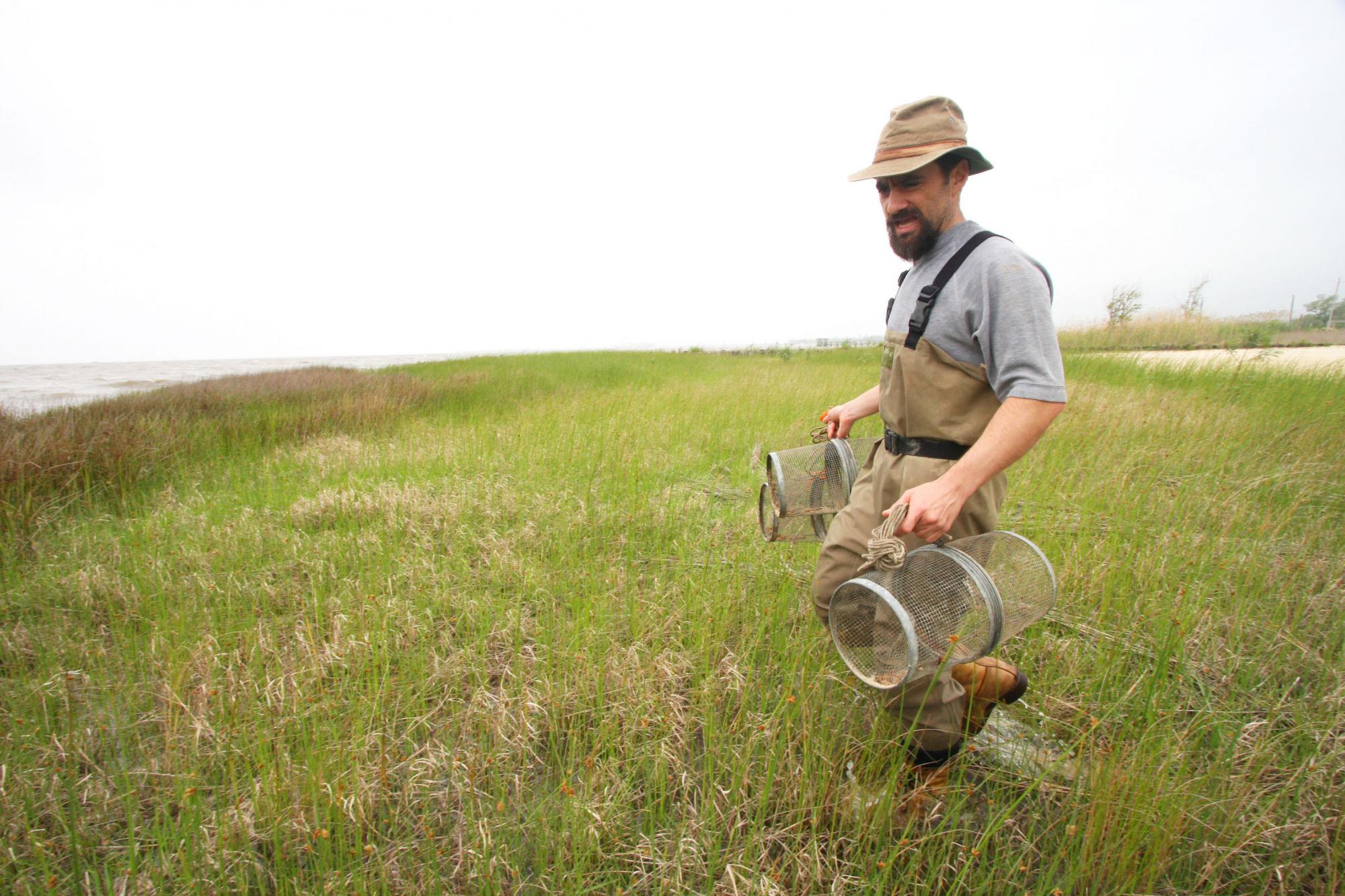A tiny fish with transparent embryos is helping University of California, Davis, researchers shed light on how exposure to crude oil and flame retardants can affect behavior, skeletal growth, cardiac health and other internal functions in offspring and subsequent generations.
The research on multiple generations of Atlantic killifish (mummichogs) was published across three papers in the journal Environmental Science and Technology.
The work, some dating back to the 2010 Deepwater Horizon oil spill off the Gulf coast, offers insight into how toxic exposures - even short ones - can unfold over time in many species.
"We need to broaden our thinking of risk," said Professor Andrew Whitehead, chair of the Department of Environmental Toxicology and senior author on the papers. "Toxic exposures can have effects that propagate well beyond the lifetime of directly exposed individuals."

The researchers chose to focus on killifish because they are important ecologically and were the most abundant species in the marshy areas affected by the Deepwater Horizon oil spill. Their embryos are transparent, allowing developmental changes to be seen with a microscope. Their genetics, gene functions, cell biology and developmental biology are very similar to humans and other wildlife.
"The same genes and cell biology that regulates heart, brain and skeletal development in a fish are the same as those that regulate development in humans," Whitehead said.
Generational effects differ
Whitehead began his oil spill research in 2010 while at Louisiana State University when the Deepwater Horizon accident released more than 3 million gallons of crude oil into the Gulf of Mexico. Researchers exposed killifish to Deepwater Horizon oil and compared their offspring with those of unexposed adults.
They found that if parents had been exposed to oil, their first-generation offspring exhibited altered functioning of genes that affect nerve and brain processes. In the second generation after exposure, genes that affect heart function were different from those of killifish whose parent or grandparent weren't exposed. Also, growth and skeleton shapes were affected by that initial exposure in both first- and second-generation offspring.
"Exposure affected body shape and the function of many hundreds of genes many years and at least two generations later," Whitehead said. "That's a pretty durable impact."

Exposures with lasting effects
The research into flame retardants centered on polybrominated diphenyl ether, or PBDE, which has largely been phased out due to its toxicity, but is still manufactured in Asia and is ubiquitous in air, soil, the environment, wildlife and humans. It can be passed through the placenta to breast milk and eggs.
"Every single one of us has detectable levels of flame retardants in our bodies," Whitehead said. "They are everywhere in the environment and in everything."
The researchers looked at the neurobehavioral and molecular effects of PBDE. In one group, they exposed adult fish to PBDE via diet, which passed the chemical on to offspring. The other group consisted of embryos exposed directly to contaminated water. In offspring of exposed fish, they measured various aspects of behavior that represents brain function, and molecular effects in the brain.
In both groups, researchers noticed that in the generation after exposure, behavior was altered. Exposed moms passed chemicals to their offspring so exposures started in the earliest stages of development. This had life-long impacts on behavior and on molecular function within the brain. Even if fish were exposed for just one week during development, then raised for the rest of their life in clean water, their offspring inherited altered behavior.
"That very narrow window of exposure during development has effects on your babies," Whitehead said.
Nicole McNabb-Kelada, who earned her Ph.D. at UC Davis and is the first author on the PBDE papers, called the long-term effects surprising: "It was eye-opening to see that both maternal and environmental early-life exposures caused changes across the lifetime and into the next generation, each in its own way, showing multiple pathways for these chemicals to have lasting impacts," she said.
Looking back to determine risk
Oil spills, which contain chemicals similar to those in air pollution, and fire retardants are commonly encountered in the environment. This research provides insights into how humans, fish and other species are affected by contamination that can last generations.
"The legacy of toxic exposures can be long - much longer than people tend to think and much longer than our regulatory structures think about," Whitehead said. "If we want to be smart about public health and wildlife health, we need to think about these longer-term outcomes and orient our science toward discovering them, both the causes and the consequences. The intervention that's necessary is to prevent exposure in the first place."
Jane Park in the Department of Environmental Toxicology and David Rocke from the Department of Biomedical Engineering at UC Davis contributed to the oil spill research, as did Chelsea Hess, Fernando Galvez and Charles Brown from Louisiana State University and Christoph Aeppli from the Bigelow Laboratory for Ocean Sciences. It was funded by the National Institute of Environmental Health Sciences and National Science Foundation.
Nicole McNabb-Kelada and Ashley De La Torre in the Department of Environmental Toxicology contributed to the flame retardant research, as did Tara Burke, Bryan Clark, Saro Jayaraman, Lesley Mills, Diane Nacci, Hannah Schrader and Madison Silvia with the U.S. Environmental Protection Agency's Atlantic Coastal Environmental Sciences Division. The National Institute of Environmental Health Sciences, Fumio Matsumura Memorial Endowment, Jastro-Shields Research Awards, UC Davis Wildlife Health Center Fellowship, Emmy Werner and Stanley Jacobsen Fellowship, Lewin Family Fellowship and Schwall Dissertation Fellowship funded the research.






